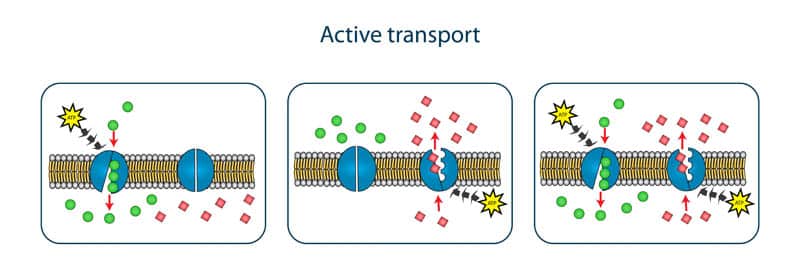Is lily of the valley toxic to dogs? Ι What is lily of the valley Ι Toxicity Ι Clinical signs Ι First aid Ι Treatment Ι How much lily of the valley is toxic to dogs? Ι Is lily of the valley related to the Lillium species?
Is lily of the valley toxic to dogs?
Lily of the valley (Convallaria majalis) is toxic to dogs. The toxic principles are cardiac glycosides, (primarily convallarin and convallamarin) and saponins. Cardiac glycosides are plant steroids that affect the heart and saponins are steroid or triterpene glycosides that cause gastrointestinal upset. All parts of lily of the valley including the leaves, flowers, berries, stems and bulbs are toxic.
What is lily of the valley
| Family | Asparagaceae |
| Botanical name | Convallaria majalis |
| Common names | Lily of the valley, European lily of the valley, Our lady’s tears, May bells, Mary’s tears |
| Leaf colour | Green |
| Flower colour | White and pink |
| Toxicity | Toxic to dogs |
| Toxic properties | Cardiac glycosides and saponins |
| Toxic parts | All parts (highest concentrations are in the roots) |
Lily of the valley is a flowering bulb native to Eurasia which produces small, fragrant, bell-shaped, white flowers in early spring. The plant grows to a height of 15 cm, with strappy, green leaves. Lily of the valley is typically grown outdoors, and occasionally used in bridal bouquets, but are rarely used as a cut flower in homes.
The preferred habitat for lily of the valley is woodlands with rich soil, and is a popular ground cover plant in gardens. The sweet-smelling flowers bloom from early spring, symbolising the end of winter.
Lily of the valley contains at least 38 cardiac glycosides. Direct ingestion of lily of the valley is uncommon in dogs but may occur if the dog consumes grass clippings containing lily of the valley or lily of the valley medications.
Toxicity
- Saponins: Saponins are bitter-tasting, amphiphilic glycosides of steroids and triterpenes widely distributed in the plant kingdom. These phytochemicals protect the plant against bacteria, fungi, parasites, insects and herbivores. Saponins consist of hydrophobic polycyclic triterpenes or steroidal sapogenin and one or two hydrophilic glycoside moieties attached to the backbone. Ingestion of plants containing saponins can cause gastrointestinal upset including nausea, vomiting, diarrhea and loss of appetite.
- Cardiac glycosides: A are a group of chemical compounds where a sugar molecule is bound to a non-carbohydrate molecule. Convallarin and convallamarin inhibit the enzyme Na+/K+-ATPase pump. This ion pump is embedded in the cellular membrane and uses the molecule adenosine triphosphate (ATP) as a source of energy. For every ATP used, three sodium ions are exported and two potassium ions are imported. Cardiac glycosides inhibit the activity of the ATPase pump, which causes an increase in sodium and calcium within the cells, increasing myocardial contractility (the force with which the heart contracts) as well as vagal contractility, which slows down the heart.

All parts of lily of the valley are toxic to dogs including the leaves, stems, flowers, berries and bulbs.
Clinical signs
Symptoms of lily of the valley poisoning can present as gastrointestinal or cardiac dysfunction. Common signs include the following:
Gastrointestinal
- Anorexia
- Nausea
- Drooling
- Vomiting
- Diarrhea
- Abdominal pain
Cardiac
- Arrhythmia (irregular heartbeat)
- Bradycardia (slow heartbeat)
- Collapse
- Death
Other
- Seizures
- Blurry vision
- Skin rash
- Hypotension
- Neurological disorders
First aid
Lily of the valley is extremely toxic and medical attention medical attention should be sought immediately.
How much lily of the valley is toxic to dogs?
A lethal dose hasn’t been established in dogs, and due to the huge size difference, it would be difficult to establish. In mice, a lethal dose that kills 50% of the population (LD50) has been reported to be of 2 grams > kg.
Treatment
Unfortunately, there is no known antidote to lily of the valley poisoning. However, prompt medical attention can help manage the symptoms and prevent complications.
The primary goal of treatment is to prevent any further absorption of the toxins by implementing gastric decontamination procedures such as gastric lavage (pumping the stomach) or inducing vomiting. This will be followed with administration of activated charcoal to bind to any remaining plant matter in the gastrointestinal tract.
In addition to these measures, managing cardiac symptoms is crucial in treating lily of the valley poisoning. The veterinarian may use medications such as lidocaine or atropine to manage abnormal heart rhythms and oxygen therapy to improve breathing if necessary. Intravenous fluids are administered to treat or prevent dehydration and correct any electrolyte imbalances.
To monitor the patient’s progress and response to treatment, the veterinarian will run repeat blood tests to measure serum potassium levels and perform an electrocardiogram to monitor heart activity. With proper and timely care, patients can recover from lily of the valley poisoning.
Is lily of the valley related to the Lillium species?

Lily of the valley is a different species to the Lilium family. Lilium is a family of approximately 90 flowering bulbs grown for their large, trumpet-shaped flowers. Lillium species can grow to a height of 90 – 120 cm, which is considerably taller than lily of the valley. Common varieties of Lilium include the Easter lily, Oriental lily, Day lily, Stargazer lily, Tiger lily and Day lily. While beautiful, members of the Lilium can cause acute kidney injury in cats and dogs and therefore should not ge kept in houses with pets.
Julia is a writer and landscape consultant from Wollongong with a love of horticulture. She had been an avid gardener for over 30 years, collects rare variegated plants and is a home orchardist. Julia is passionate about learning and sharing her knowledge of plant propagation and plant toxicology. Whether it’s giving advice on landscape projects or sharing tips on growing, Julia enjoys helping people make their gardens flourish.




